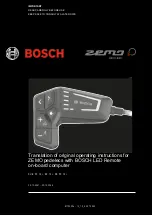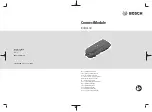
11
Riding your bike
Riding uphill
Shift to a lower gear before going uphill.
Avoid shifting when the chain is under
high tension while climbing a hill to
prevent damage to the components.
On the steepest inclines, shift your body
weight to the front of the bike to
reposition your center of gravity. This will
prevent the front end of the bike from
lifting.
Riding downhill
Assesses the risks and evaluate your riding
capacity before attempting to ride down
an incline. Hold the handlebar firmly and
keep your fingers on both brakes at all
time when going downhill. Be attentive to
your braking force to avoid locking any
wheel.
On the steepest inclines, shift your body
weight to the rear of the bike to reposition
your center of gravity. This will prevent
the rear end from lifting while braking.
You may move your body backwards over
the saddle while extending your arms as
the hill gets steeper.
Riding off road
Only ride off road trails with a purposely
designed bike.
Riding off the paved roads is more
hazardous and requires a different set of
skills and good balance ability. You must
be aware of the risks involved and fully
assume the responsibility.
Respect your own limits and experience
level.
Equip yourself with the adequate
protective gears. Sudden loss of control
can happen when riding off road. Learn
how to dismount off the bike before
falling.
Respect private property and the other
users on the trails and slow down when
you cross. It is recommended to bring a
basic tool set. Be prepared for emergency
fixes on your bike. Do not throw away
garbage on the trails.
Riding in wet weather
Avoid riding in wet weather if possible as
this seriously increases the risk of losing
control and falling.
Tire contact with the ground and braking
efficiency is greatly reduced on wet
conditions. Slow down, start braking
earlier than usual and more gently, take
extra caution when turning.
Riding at night
If you must ride at night or during lower
daylight time, make sure you are visible to
the others and that you can also see them
well.
Reflectors included with your bike are a
minimal safety device and it is
recommended (often mandatory too)
that you use a proper set of lights when
riding at night.
Wear bright colored clothes and
accessories. Always double check and
confirm that others see you before
crossing an intersection or attempting a
manoeuvre. Always ride defensively and
assume that people did not see you at
first.
Riding on public roads
Avoid riding in heavy traffic if possible. It
is your responsibility to know and follow
the local laws regarding the use of a bike
on public roads.





































